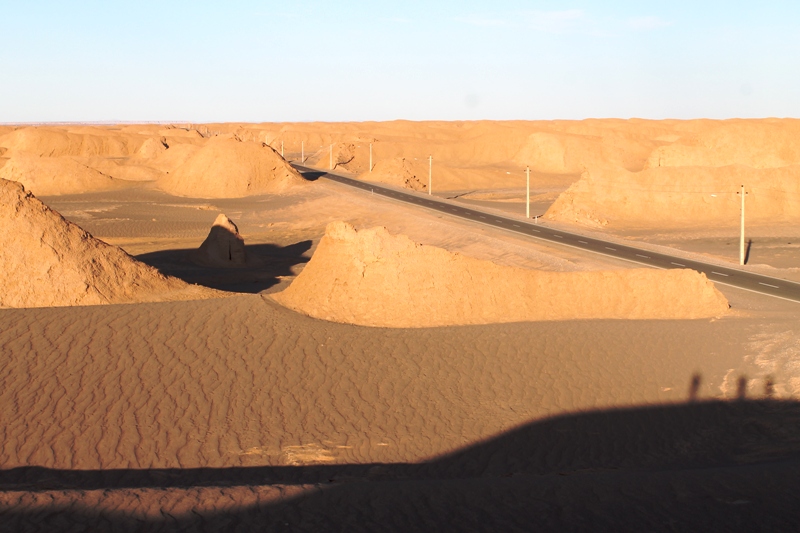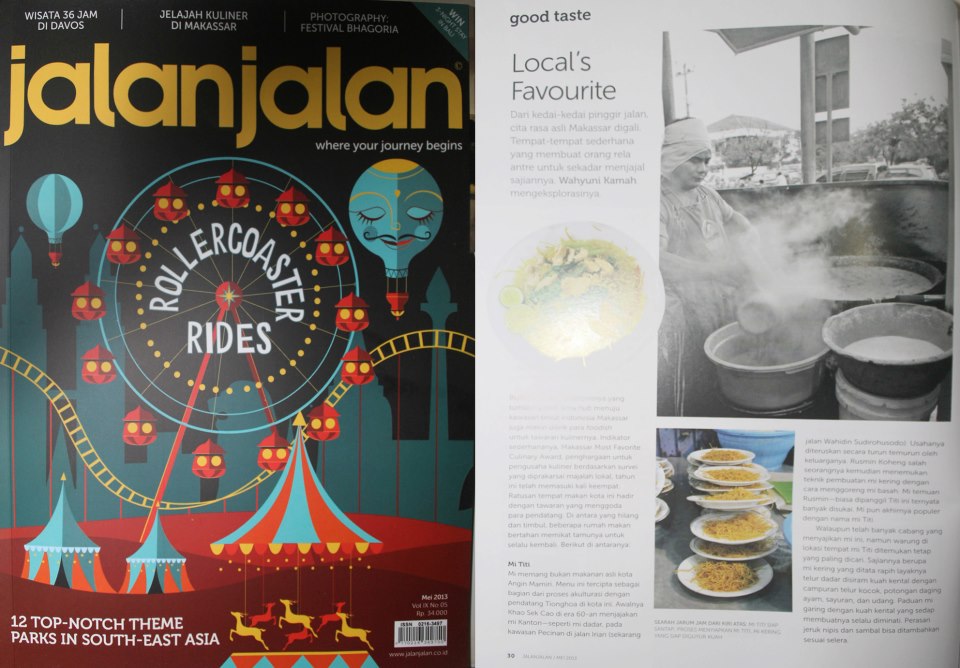Nasriati: Kerman, Iran (Part 2)
This is the second part of my Perfect Strangers Series in Kerman
The hotel where I stayed in Kerman provided a good breakfast. That morning I had a full breakfast as I was going on a day long trip and it was cold (for me) outside. The breakfast was full of protein: yogurt, milk, egg and, of course, the bread with different kinds of marmalade and cheese cream. The cheese cream was so tasty, I even noted its brand. I decided to buy it later on to bring home. In every hotel where I stayed in Iran, I always liked its milk. It just tasted different from the milk in my country. I heard the milk in my country was mixed with quite a lot of water. Anyway, I am not embarrassed to say that I could finish three glasses of milk during breakfast in Iran. It was just fresh and flavory.

As I was eating, my mobile phone rang. It was from Nasriati. She said that she would be late coming to the hotel because her daughter fell and she needed to take care of it. Despite that accident, she didn’t cancel her appointment. “I already promised to accompany you since a long time ago,” she reasoned. I told her to take her time and she could come whenever she was ready.
After breakfast, I talked with the hotel owner and asked about renting the car to take me to Lut Desert. He said the price for a day trip included the fuel and the driver. The trip included stopping by at some points of interest. But there was no guide. When I was discussing it, Kak Nas came in. I told the hotel owner not to worry about the guide as my Indonesian friend would join me. From my previous experiences, I found that I had a hard time when the driver didn’t speak English. It was fine for just a short trip, but not for a long day trip. I discussed a bit with Kak Nas. She said that the price was good.
It was my big day in Kerman as I was going to see sand dunes and desert. I was in a desert in Jordan some years ago when I visited Petra. But the desert I was going to visit today was the hottest spot in Iran. I was very excited and I was happy that Kak Nas came with me.
Seemingly our driver has used to bring tourists to Lut Desert so he knew well about the timing, places to stop and to eat. It was a beautiful and cloudless morning, the temperature was cold but tolerable. I just needed to put two layers on my head because of the cold wind.
On our first leg of the trip we passed small towns and villages before reaching Mahan, a neighboring city of Kerman, to visit our first destination: the Shah Nematallah e-Vali tomb.
Shah Nemattalah e-Valli Tomb
Whenever I entered any shrines of mystics or Sufi Master in Iran there was never any atmosphere of sorrow, instead I felt a sense of peace and serenity. This is because most of the shrines are set in pleasing ambience like in a Persian garden and so is the Shah Nemattalah e-Vali tomb.
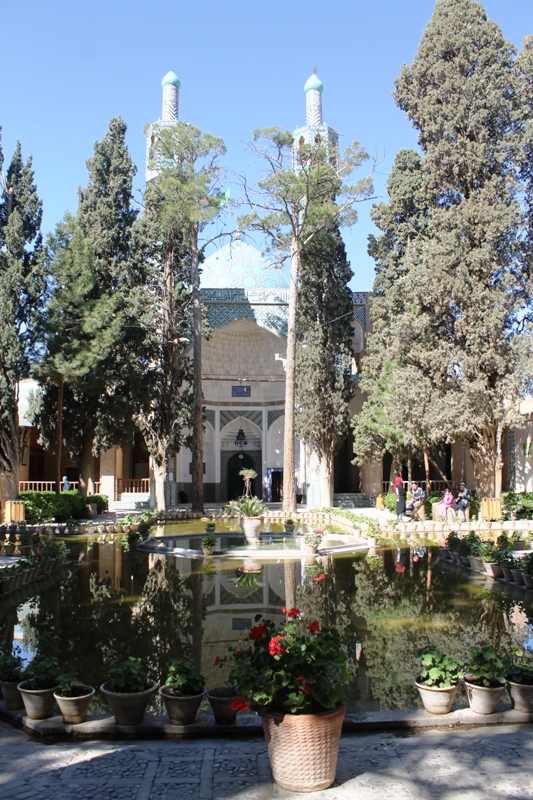
We arrived in the complex of the shrine early in the morning and we were the first visitors as I didn’t see any other people yet. It was a huge complex with three outer courtyards. Stepping from the main entrance gate, one could see the different types of architecture in the complex.
Shah Nematallah e-Vali was a Sufi Master, mystic and poet who lived between the 14th and 15th century. He traveled to many parts of the world in his quest to enhance his spirituality. Later on, he moved to a village near Kerman that is currently known as Mahan. He died in Mahan and was buried in a garden during the Timurid Empire period. Shah Nematallah e-Vali was a founder of tariqa Nematullah that today has many followers in India, Europe, North America and other parts of the world.
The tip of the protruding turquoise dome could be seen from a distance. Under this dome housed the tomb of Shah Nematallah e-Vali. The dome and a courtyard were constructed on the request of Ahmed Shah Al Vali Bahamani, the ruler of Deccan in India. He was one of the followers of Shah Nematallah e-Vali. The following rulers of Safavid and Qajar Empire later added the buildings in the complex. Now the shrine becomes one of the heritage buildings in Iran.
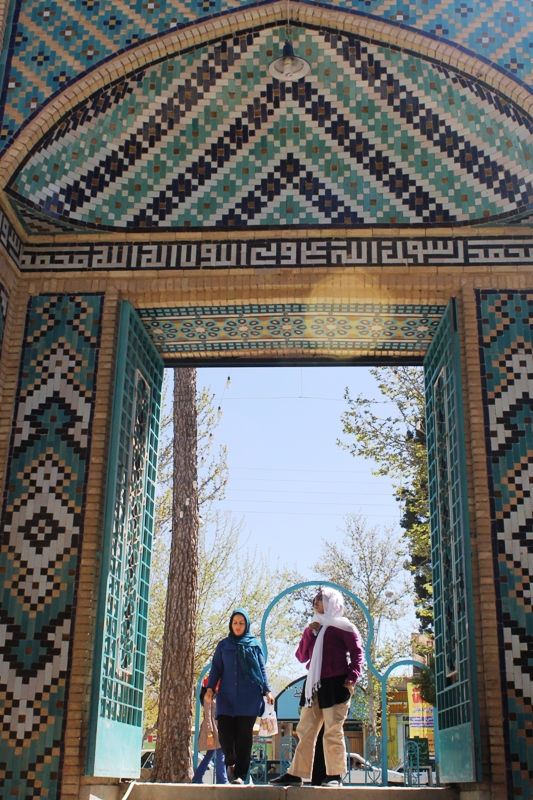
The Shah Nematullah’s tomb was housed in a domed building on a shaded courtyard. We entered the house that was called Astana Shah Nematallah e-Vali. The building has Timurid architecture. There were vaults and yvans with stucco elements, some of them looked complex. The tomb of Shah Nematullah was located in a room and was protected by a fenced window. A painting of him was put above the window. The carpeted building was spacious, its entire wall had decorations of geometrical forms and calligraphies.
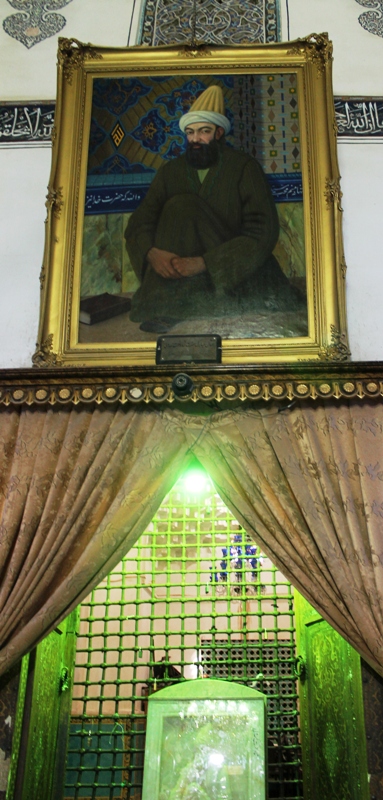
We stayed for a while in the courtyard garden under the blue sky enjoying the sounds of chirping birds that perched on cypress trees. As the day was getting late, more visitors were coming. We left the shrine and continued our trip of Shahzadeh Garden, which was about 5.5 kilometers from the shrine.
We were leaving behind the small towns and villages, on the road as we kept riding, I started to see the dry mountains only. “Lut Desert is behind those mountains,” Kak Nas who sat next to me said. I nodded and observed the surroundings. I imagined how dry and harsh the environment outside must have been. But I was wrong.
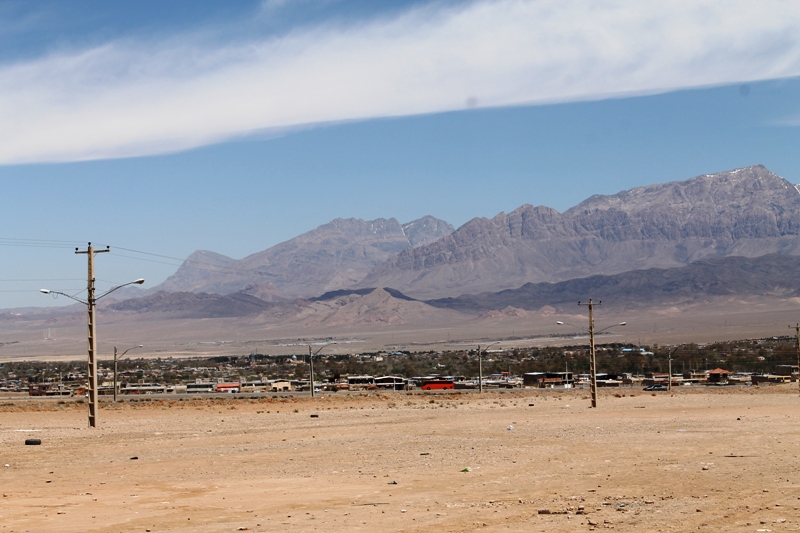
Shahzadeh Garden
Just like in Yazd where I found an oasis of green garden amid the desert, and so did I in the desert of Kerman. The Shahzadeh Garden which means the prince garden was a real gem in the desert. I instantly forgot I was in the desert as soon as I entered the garden that was built in about 1850. It is said that the garden was built for a political figure in the Qajar Dynasty. The 5.5-hectare rectangular garden was included in the UNESCO World Heritage List.
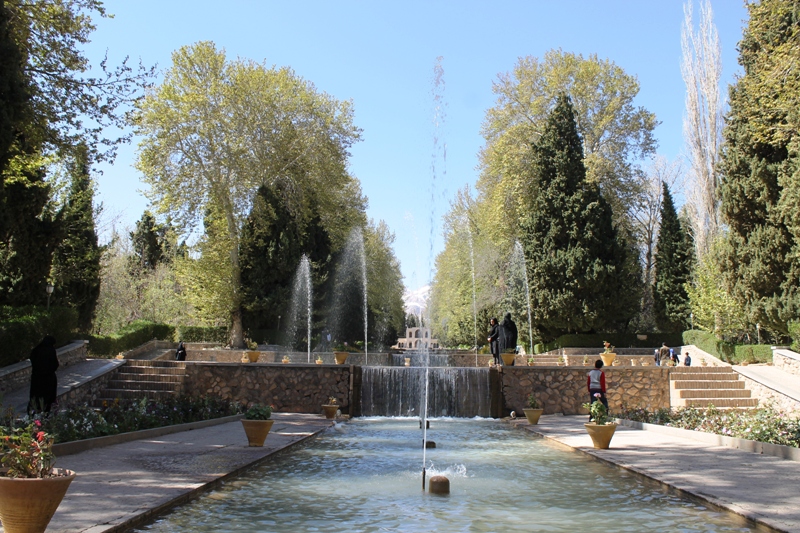
The garden was lined by dense tall cypress and pine trees on both sides. In the middle of the garden there was a long pool with water streaming from the main pool in the upper part to the lower part of the garden. The water streamed through the cascaded pool down to the lower part. It all gave a soothing effect to the eyes. Along the pool yellow flowering shrubs were planted.
In the upper part there was a two-storied building whose second floor was previously used as living quarters. Despite being located in the middle of the desert, from any point in the garden wherever I looked outside, I got a beautiful background. From the upper part of the garden, the view of the desert mountain was flanked by the trees while from the lower part of the garden, the view was a beautiful background of the mountain.
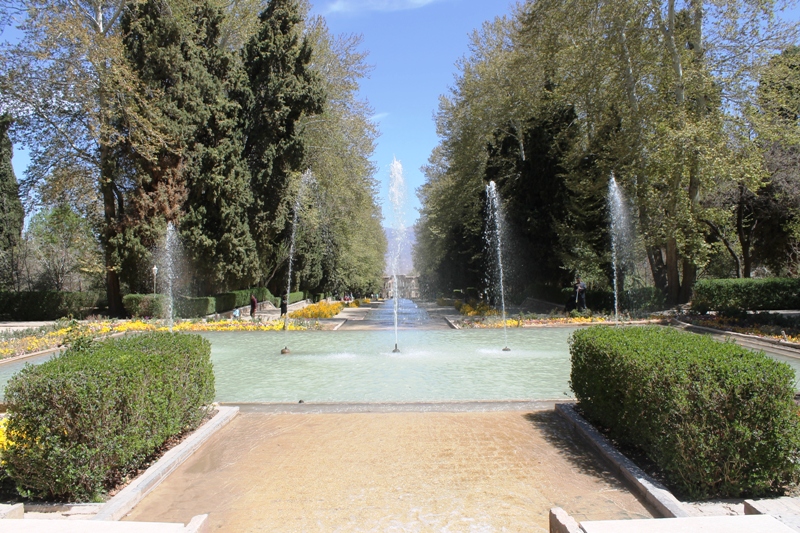
As we were there, the Garden was quite crowded with visitors. Shahzadeh Garden was really like a magnet, if I didn’t think of other places to be visited, I preferred to stay longer there. It is indeed a showcase of a Persian garden that revealed the engineering skill and the concept of beauty.
Rayen Citadel
We continued our drive to Rayen Citadel. The citadel was located about 100 kilometer in the south of Kerman. It was another historical heritage in Kerman Province. The citadel dates back from the Sassanid pre-Islamic period (5th century AD). It was entirely built from the clay, so from a distance visitors could spot it from its light brown color.

As soon as I set my foot in the gate of the citadel, I felt like I was in an ancient city. I stepped on a cobble-stoned path that was flanked by high brick and clay walls.The whole citadel covers an area of 22,000 square meters.
Thousand of years ago, Rayen Citadel was situated on the trade route. In the ancient time, it was a flourishing city. The neighborhood in the citadel was divided into social classes of people based on their occupations. It had facilities like school, zurkaneh (gymnastic facility), barracks, cellar and stables. To protect the citadel from the enemy, there were four 11-meter watchtowers. Ditches were also built in the south of the citadel. In addition to that, there were 12 towers inside the citadel to keep the city under supervision. The citadel only had one entrance where the guards controlled the people who entered and exited. It also already applied the quarantine for new visitors.
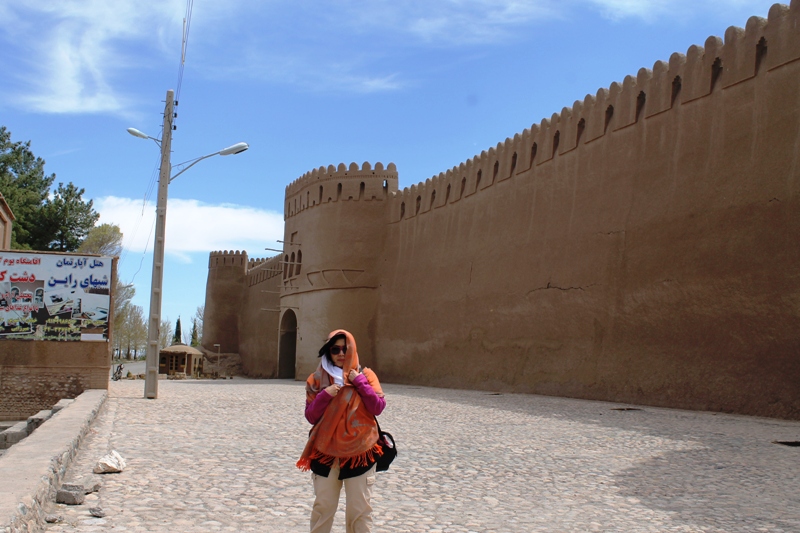
The Rayen Citadel that I saw was reconstructed in 1995. Some parts looked new and fresh. The citadel had been reconstructed a couple of times because it had been destroyed by natural phenomena like earthquakes. Interestingly, the citadel had never been destroyed by outside force or attacks.
As we were visiting the Citadel, we met a small group of four Iranian visitors. Kak Nas helped me to translate. We talked for a while and as always they were curious to know that I was coming from Indonesia. One of them asked to have a group photo with me. As we were going to say goodbye, one of the girls asked me if I had something from Indonesia that I could share with her. Again, I didn’t anticipate the impromptu meeting with the locals so I didn’t bring anything. Usually I bought some extra key holders just in case. I was sorry for that but the girl didn’t look sad when I said I didn’t bring anything specific from Indonesia with me.

We could not access the whole Citadel, only a part that had been reconstructed was opened to the public. That portion included the top roof from where we could see parts of the citadel. On top, the hot weather was balanced with the wind that blew quite strongly. I could see only the dry mountains outside the citadel. “If you go to Bam, the citadel is much bigger than this,” Nasriati told me. Of course I’d like to see Bam Citadel another time when I came back.
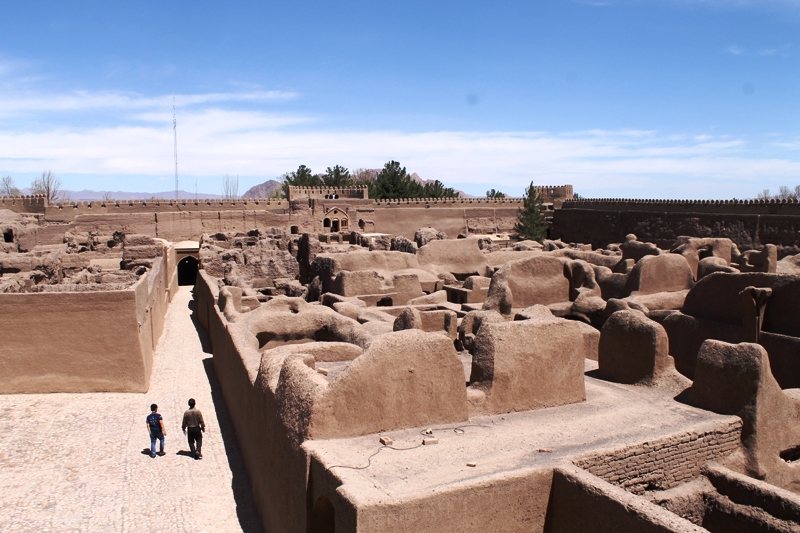
It was past midday and we were getting hungry. So we decided to leave Rayen Citadel and continued the drive to the next destination. The cars could not be parked in front of the Citadel so we needed to walk about one hundred meters where our driver was waiting for us.
Kak Nas asked the driver where we could eat. Having been familiar with the situation, he said that in order to save the time it was better that we just bought the food and ate on our way. I agreed with him. In the Circle that looked like a downtown we stopped. I gave the driver the money so he could buy the food for the three of us. I liked our driver, he was kind of managing us in a right way.
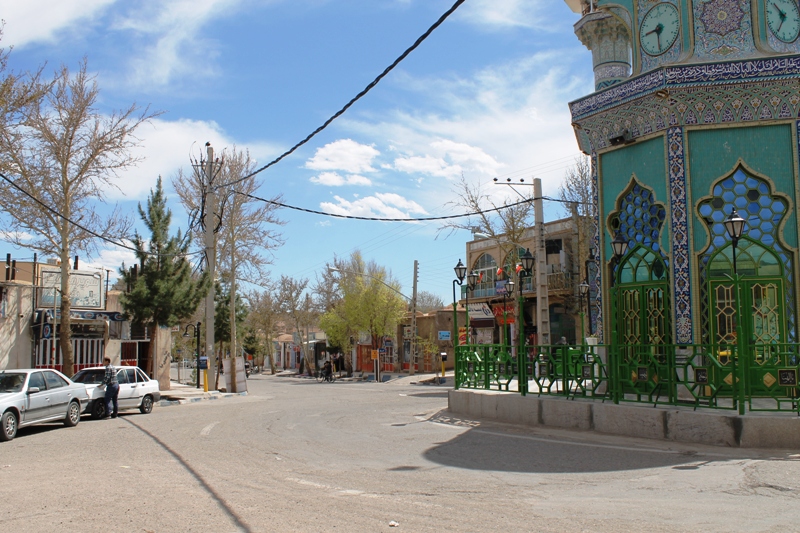
After finishing eating, the driver said that he would drive to part of the mountains with colorful rocks before going to Lut Desert. I could not say no. I was in the desert, I just wanted to use the best of my time when I was there.
Lut Desert
By the time we came to the scene, I felt that we were nowhere as the road was totally deserted. The surrounding was dry rocky mountains. The mountains had different tones of colors. It was awesome. It was silent. We stopped for a while and took some photos. Then the driver turned back and continued driving to Lut Desert.
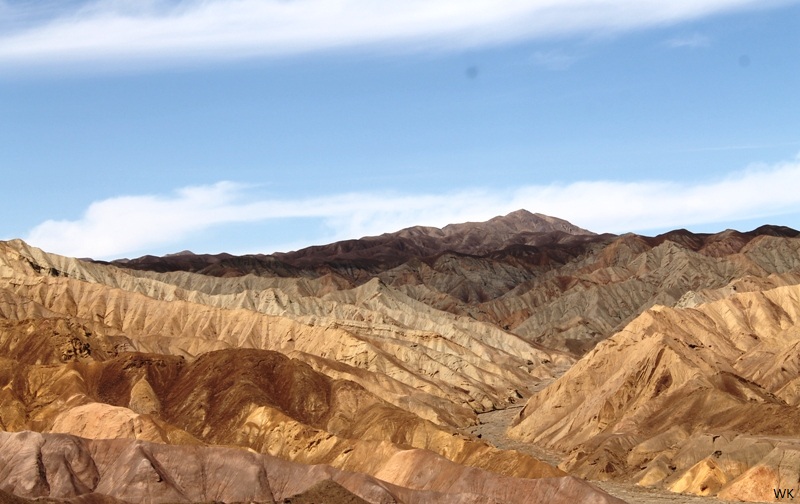
My heart beat because of the excitement. I always love the wonder of nature. Seeing and being in the desert was really something for me. Our driver drove at the full speed on the smooth and unoccupied road. We drove through the road with rugged mountains on our right and left sides.
“We are now in Lut Desert,” Kak Nas told me. There, we were. I was really stunned with what my eyes saw in the surrounding. It was like an extended carpet of desert overlaid the surrounding, dry and hot. I took out my fleece jacket as the temperature was rising. We pulled over by the side of the road to see the qanat, an ancient engineering underground water channel. The long road looked like a linear line. It was completely deserted.
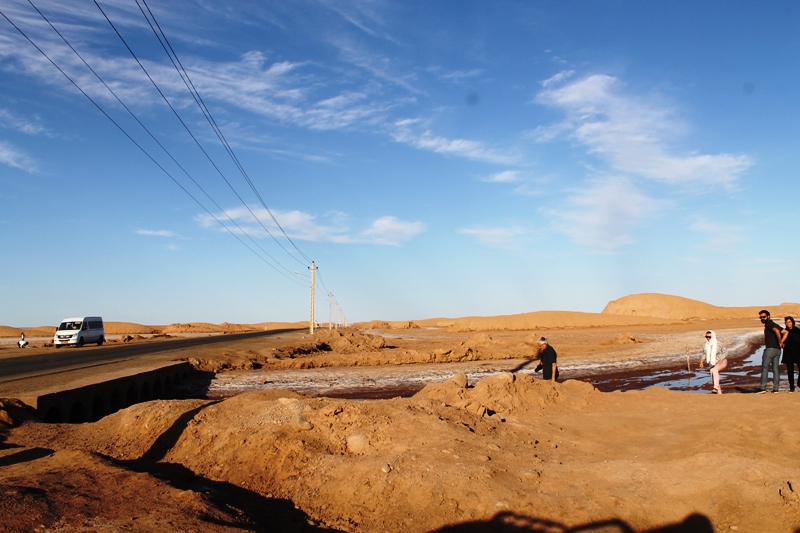
“Am I at the end of the world?” I asked myself when I viewed the desolate desert around me. There was only silence and beauty around me. The color of clear blue sky was in contrast with the brownish desert. It was just fantastic. We stayed for a while. “We will continue to see Lut Desert,” Kak Nas said. “This is just part of it,” she added.
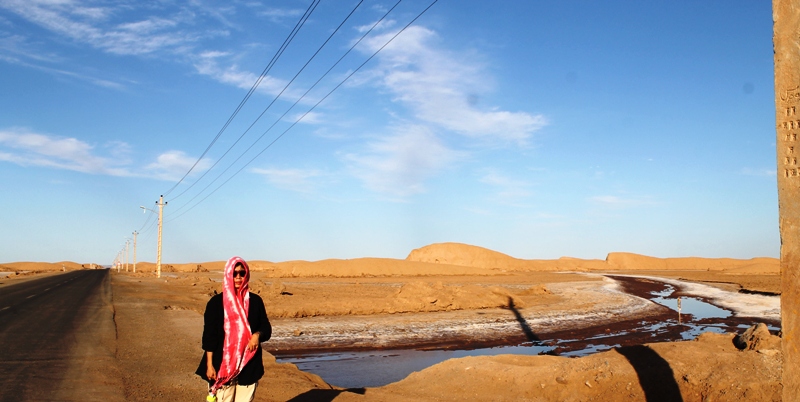
Lut Desert is the 25th largest desert in the world. It stretches in the Kerman and Sistan and Baluchistan Provinces. In 2016 it was included in UNESCO World Heritage List. The satellite photo of NASA recorded that from 2004 to 2007 and in 2009, the highest surface temperature on Earth was found in the Lut Desert.
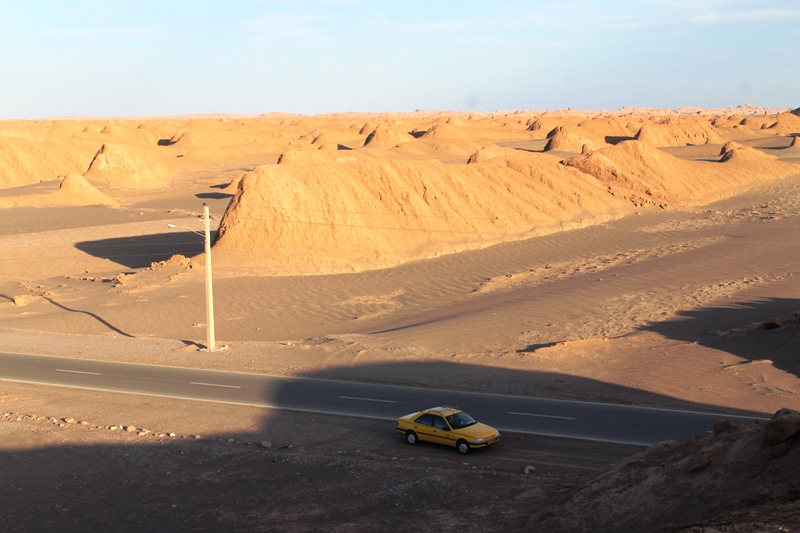
The car kept going until we reached an area where as far as we saw was only desert. It was just incredible! It didn’t look like a planet earth if there were no road that divided the desert. We arrived in a good time as now the sun light was not so intense. The driver was looking for a spot for us. We stopped at a hill desert. Our goal was to reach the top of the hill. There were no steps and it was a bit slippery since it was sandy. I was reluctant to climb as I was afraid to fall. (I had a bad experience when I fell in an archaeological complex in Upper Mesopotamia a few years back. After that I was cautious with anything related to climbing). But our driver was prepared. He brought with him a kind of rope to pull me up. And he succeeded in doing that! By the time we were on the top of the hill, I just forgot everything. On the top it was just extremely beautiful! I was surrounded by variable forms of hilly deserts.
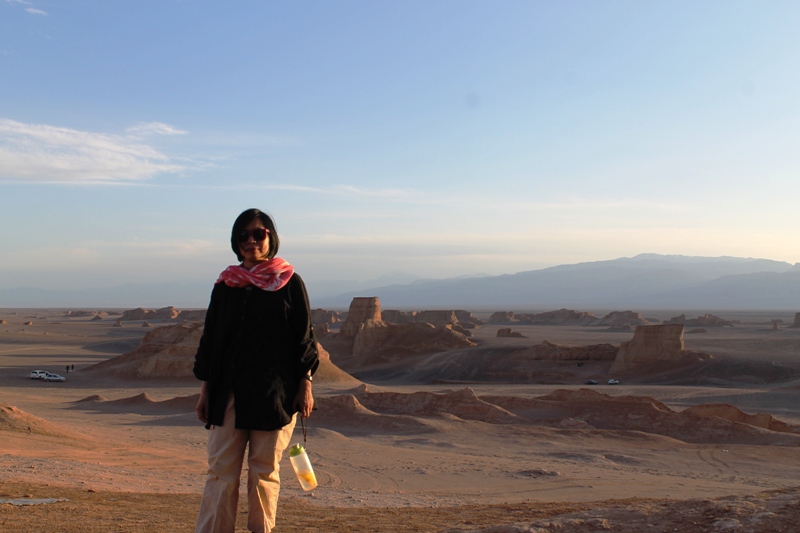
“You can take off your headscarf, no problem,” Kak Nas told me. The landscape and nature were all really incredible. From a distance I could see other white and yellow cars that were parked by the hills of desert. Just like us, they were also visitors who wanted to enjoy Lut Desert. I didn’t want to miss the moment of being blessed by the wonder of nature of Lut Desert.
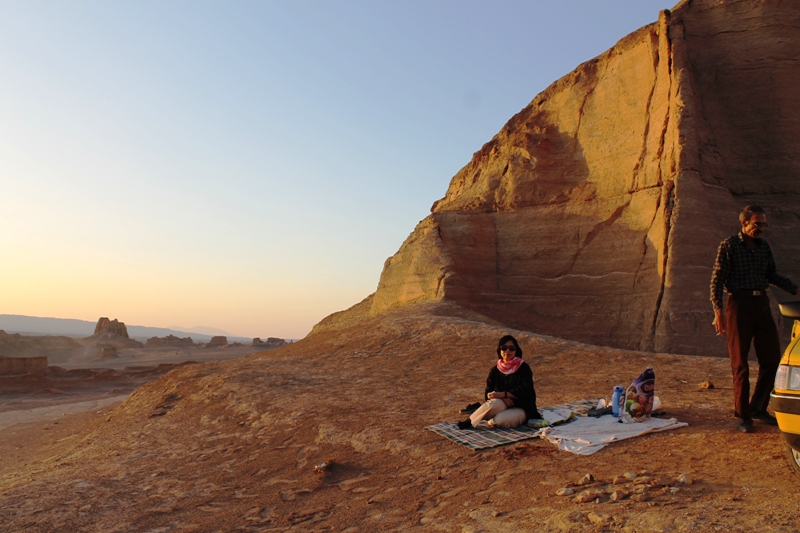
Our driver gave his best service. He brought with him the mat, water jug and watermelon. So we could enjoy the panorama by sitting on the mat while eating the slices of watermelon. The silence and landscape of Lut Desert were unsurpassable. We stayed there until the sunset. As it was going to dark, we left the hill. I was so pleased with my trip to Lut Desert. Next time when I come back again, I would like to sleep in the tent. The wonder of nature of Lut Desert was really unforgettable.
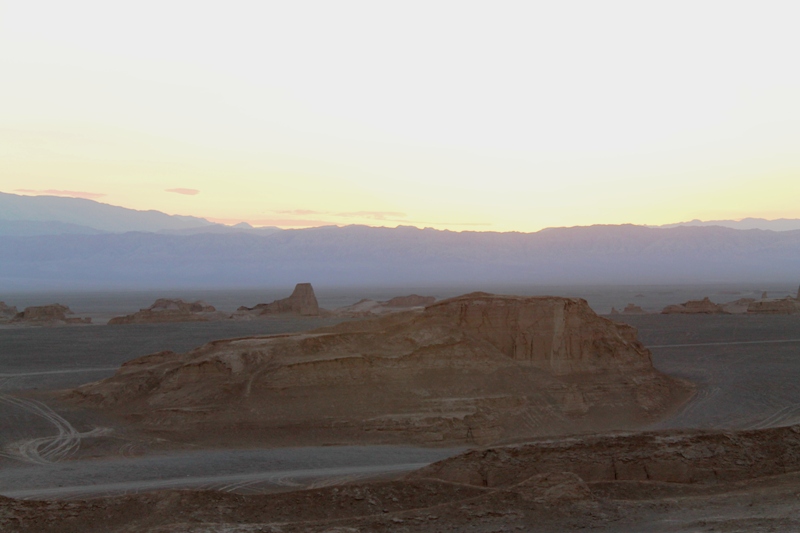
To be continued
